On Dec. 6, MCPS published a new School Profile Dashboard, making school information on enrollment, staffing, facilities and programs and academic pathways more accessible to the public. The Dashboard, and additional data published in the Maryland State Department of Education’s (MSDE) Maryland Public Schools Report Card, reveal disparities in test scores and overall academic achievement among MCPS high schools.
MCPS created the School Profile Dashboard as a new inclusive data collection initiative — the report is available in eight languages, provides summary graphs and allows users to save data in various formats. The Dashboard’s accessible format replaced the Schools at a Glance Report, which provided information on enrollment, staffing, facilities, programs and more in a single document summary.
The MSDE’s Report Card grades schools and districts across the state by measuring test results, data on postsecondary readiness, progress of English learners in achieving English language proficiency and graduation rate, according to a community letter sent by Principal Intern Gregory Miller on Dec. 13. Whitman earned an overall score of 77.9 out of 100, and was in the 95th percentile of Maryland schools, making it one of the highest scores in the state.
At Whitman, the average SAT score is 1,313, while at John F. Kennedy High School, the average score is 883. Discrepancies like these are reflected in other metrics as well. At Whitman, 82.6 percent of students passed an Advanced Placement (AP) and/or International Baccalaureate (IB) exam by the time they graduated, while at Gaithersburg High School, only 21 percent of graduates passed at least one of these exams.
Junior Katie Greenwald noticed discrepancies between schools as she traveled around the county for track and cross country meets.
“[While] visiting high schools across the county for sporting events, it’s apparent that disparities exist,” Greenwald said. “Whitman and other high schools in Bethesda have a lot of resources that other high schools lack. I’ve noticed that there are fewer people organizing events and there seems to be less support backing other schools farther out in the county.”
Dashboard data also shows that high schools with a higher percentage of students on Free and Reduced Meals (FARMs) tend to have a lower percentage of students passing AP/IB exams, as shown in the graph below. FARMs percentage is often used as an indicator of the overall wealth of a school.
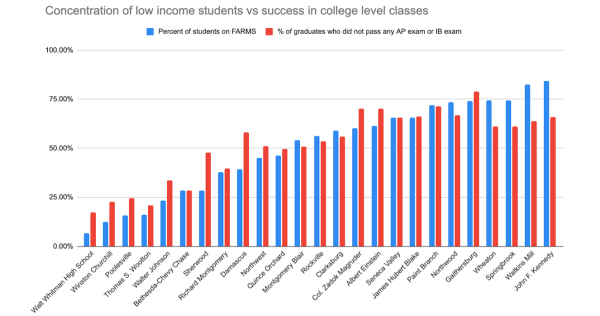
Other indicators of a school’s academic success, such as average SAT scores, AP/IB exam pass rates and graduation rates, suggest that students at schools with a wealthier population are more likely to score higher on these types of exams and standardized tests and ultimately graduate.
Dashboard data shows that the average student at Gaithersburg High School — one of the lowest ranked high schools in Montgomery County — is less likely to pass an AP/IB class and more likely to drop out compared to the average Whitman student. Roughly 74 percent of Gaithersburg’s student body is on FARMs, while only 6.9 percent of Whitman students are on the program.
Sophomore Avery Washington believes that students in high ranking schools with greater access to educational resources feel more pressure to succeed, which fosters competition among MCPS high schools.
“Whitman has some of the highest SAT scores and academic achievements of any public school in the state of Maryland,” Washington said. “I think it definitely puts a lot of pressure on students — not only on us but also on students at other schools.”
The Bethesda area is known for its prestigious schools like Thomas S. Wootton High School, Walter Johnson High School, Walt Whitman High School and Winston Churchill High School. Known as the “W schools,” these four schools consistently rank in the top 10 high schools in the state while the other 26 MCPS high schools rank as far as 129 places lower. Since school placement is based on housing districts, and the “W schools” are in areas with higher housing costs, it’s difficult for low-income students to attend top-ranked public high schools. The average home value in Bethesda, where Whitman is located, is $958,400 while the average home value in Wheaton, where John F. Kennedy is located, is $398,900.
MCPS distributes funds evenly among high schools, but disparities can occur with funding from Parent Teacher Student Associations (PTSAs). PTSAs from the “W schools” typically have larger budgets because of the higher household income levels in those areas. In 2020, PTSA clusters from Gaithersburg and Damascus had an average of $38,867 in total expenditures while PTSA clusters from Bethesda had an average of $59,857 in total expenditures.
MCPS Director of Shared Accountability Kecia L. Addison discussed the steps MCPS has taken to reduce and eliminate academic disparities in schools within the county.
“MCPS has been a front runner, from my perspective, in engaging in practices to reduce and eliminate academic disparities,” Addison said. “By examining historical and current data, the district can identify patterns, disparities, and areas where we make adjustments to ensure we uphold the values of the school system.”
In 2022, MCPS commissioned an Antiracist System Audit in response to racist incidents and claims of racial and socioeconomic inequality. The results showed that some focus group participants felt that MCPS communication to non-English speaking families or those from less affluent backgrounds was ineffective and exclusionary. MCPS then released the Antiracist System Action Plan to address concerns presented by the audit. The implementation of the plan is expected to relieve some of the racial disparities between schools, Superintendent Monifa McKnight said.
Junior Sierra Flowers attends Clarksburg High School, outside of the Bethesda area. She believes that Clarksburg is a great school, especially in terms of the extracurricular activities, many of which Flowers participates in. However, she acknowledges that there can be disparities in access to educational resources among different MCPS high schools.
“Attending an underfunded or a highly funded school, and your economic status are two big factors that can really affect how students learn,” Flowers said. “Some high schools may use certain websites that other schools might not even know about, or some schools might have better access to the internet.”
Despite efforts by MCPS to reduce and eliminate the impacts of racial and socioeconomic inequalities for students, 2023 Dashboard data shows that disparities among MCPS high schools persist.
“I’ve been handed pretty good resources in terms of college prep and things like that,” Flowers said. “I haven’t had any experiences where a person of color wasn’t given certain opportunities, but I think some high schools may have certain resources that other high schools don’t have — resources that could have been the key to passing a class or succeeding for some students.”






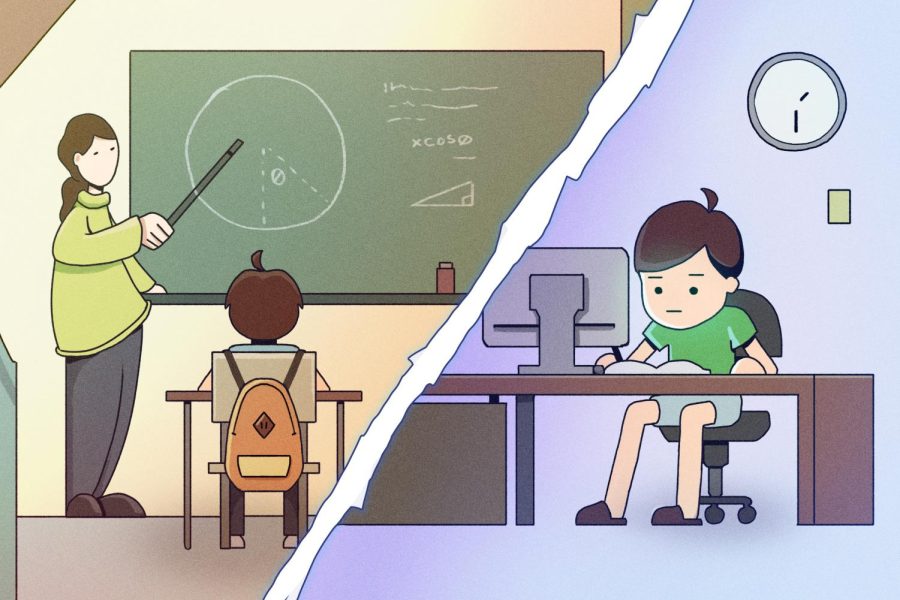

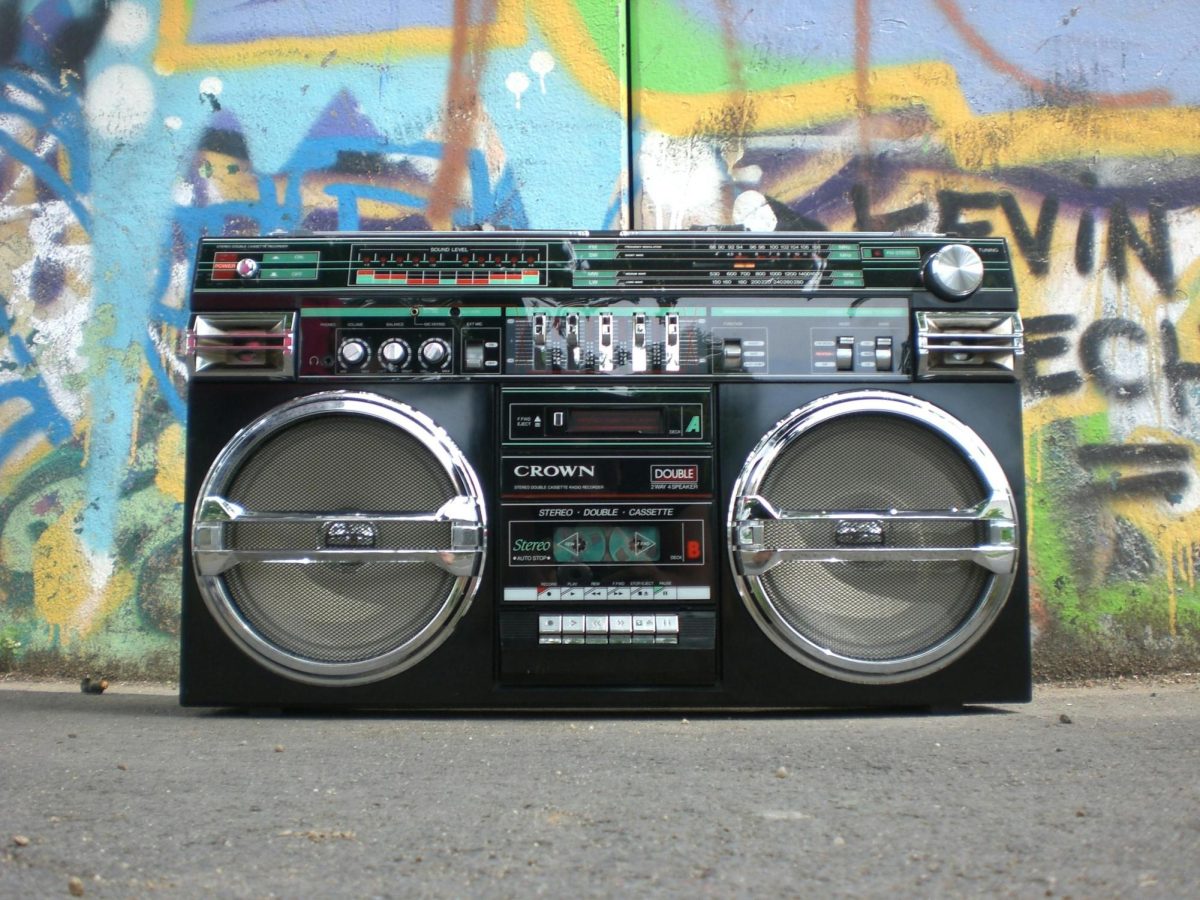
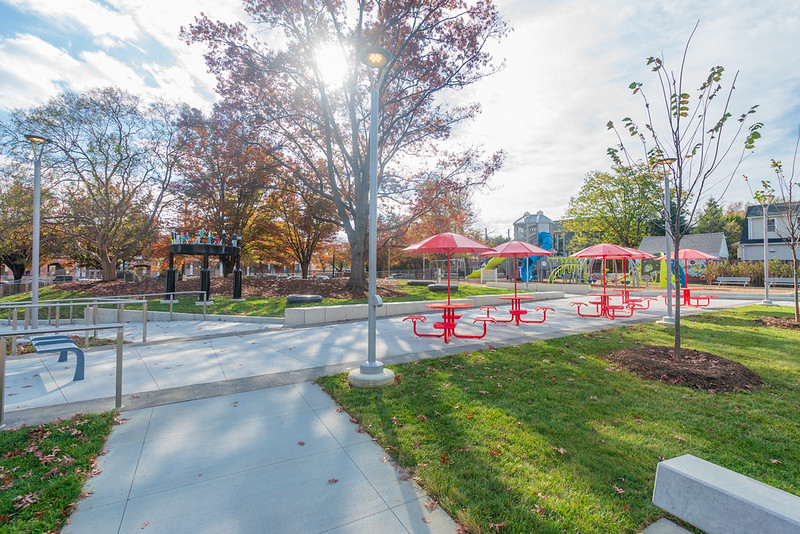
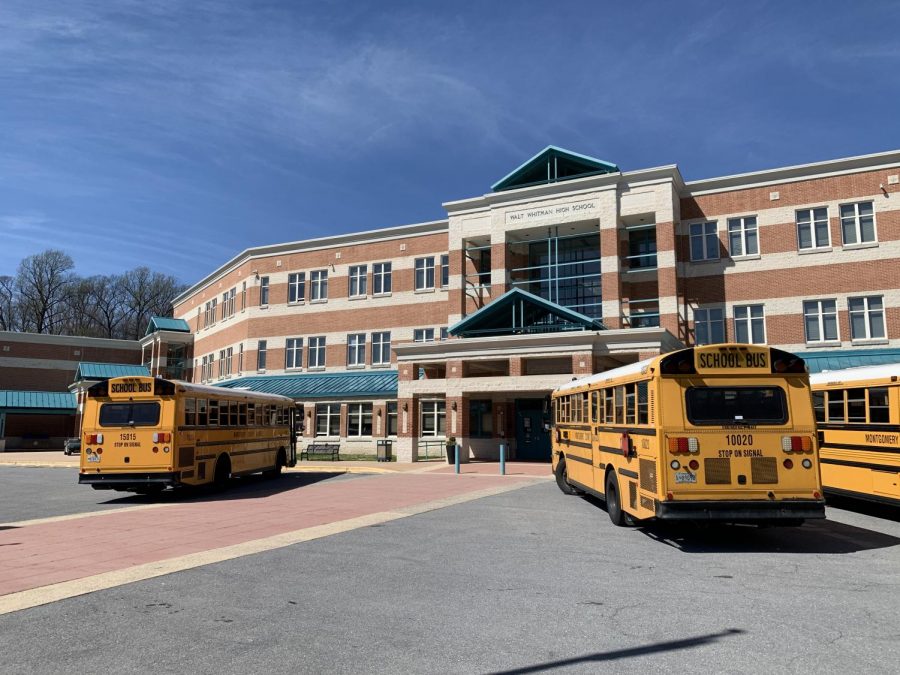









John Iceland • Apr 20, 2024 at 10:30 am
This article should have correlated the SAT disparity to whether or not parents can afford SAT prep classes. There are families paying over $10K to prepare their child for the SAT at area test prep providers.
Maria E. • Dec 29, 2023 at 10:01 am
Your reporting in this article is fair and informative. I really appreciate your choice of topic. Another aspect to consider is that in schools where FARMS is highest the parents may be working two jobs during odd hours that prevent them from engaging with their student and the school. Also for some students earning money now to help with bills at home is primary and education is secondary. I would like to see a change in the lower achieving schools that would allow for 1/2 day classes so students can work the afternoons and evenings. That would mean a longer high school attendance but would give students a chance to achieve better education.